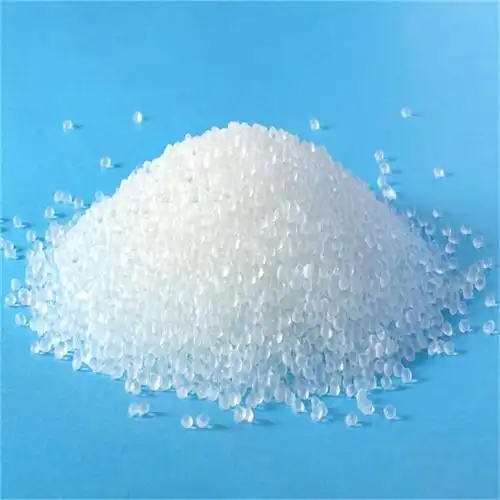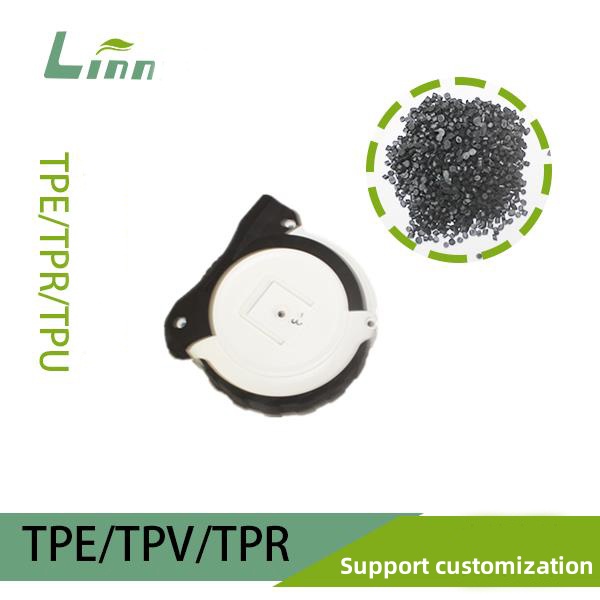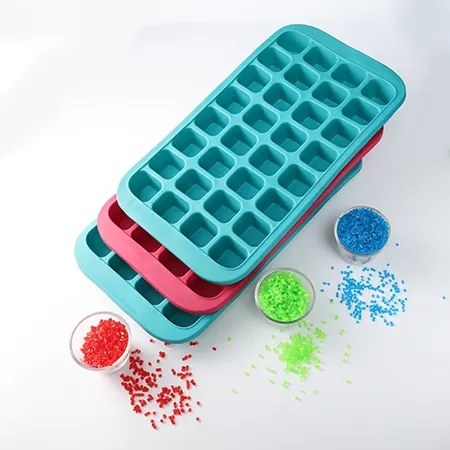In the realm of consumer electronics, data cables are the unsung heroes that keep our devices connected, charged, and ready for action. Whether it’s transferring files, syncing data, or simply recharging our smartphones, data cables play a pivotal role in our daily lives. When it comes to choosing the right data cable, two materials often steal the spotlight: TPE (Thermoplastic Elastomer) and Silicone. As someone who has been deeply entrenched in the electronics accessories industry for years, I’ve had the privilege of testing, evaluating, and working with both materials extensively. Today, I’m here to share my insights and help you determine which one is better suited for your needs.

Understanding the Basics: What Makes a Good Data Cable?
Before diving into the specifics of TPE and silicone data cables, let’s quickly recap what makes a data cable great. A top-notch data cable should offer:
Durability: The ability to withstand bending, twisting, and pulling without fraying or breaking.
Flexibility: The capacity to bend and flex easily, making it convenient to use in various scenarios.
Compatibility: The ability to work seamlessly with a wide range of devices and charging ports.
Fast Charging and Data Transfer: Support for high-speed charging and data transfer rates.
Aesthetic Appeal: A sleek, modern design that complements your devices.
Cost-Effectiveness: A balance between performance and price, making it a viable option for everyday use.
Now, let’s explore how TPE and silicone data cables stack up against these criteria.
TPE Data Cables: The Versatile and Durable Choice
TPE is a class of polymers that combines the properties of rubber and plastic, offering a unique blend of flexibility, durability, and cost-effectiveness. In recent years, TPE has emerged as a popular choice for data cables due to its numerous advantages.
Advantages of TPE Data Cables:
Excellent Durability: TPE data cables are known for their exceptional durability. They can withstand repeated bending, twisting, and pulling without showing signs of wear or tear. This makes them ideal for everyday use, especially for those who are constantly on the go.
High Flexibility: TPE offers excellent flexibility, allowing the data cable to bend and flex easily. This makes it convenient to use in tight spaces or when connecting devices in awkward positions.
Good Compatibility: TPE data cables are compatible with a wide range of devices and charging ports, including USB-A, USB-C, Micro-USB, and Lightning connectors. This ensures that you can use them with your smartphone, tablet, laptop, or any other device that requires a data cable.
Fast Charging and Data Transfer: Many TPE data cables support fast charging and high-speed data transfer rates, making them ideal for quickly recharging your devices and transferring large files.
Aesthetic Appeal: TPE data cables often come in a variety of colors and designs, allowing you to choose one that matches your personal style or complements your devices.
Cost-Effective: TPE is generally more affordable than silicone, making TPE data cables a cost-effective option for everyday use.
Potential Drawbacks:
Texture: Some users may find the texture of TPE data cables to be slightly sticky or tacky, especially in humid environments. However, this can often be mitigated by choosing a high-quality TPE material.
UV Sensitivity: While not as common as with some other materials, some TPE formulations may be sensitive to UV light, leading to discoloration or degradation over time if exposed to direct sunlight for extended periods.
Best For: Users who prioritize durability, flexibility, and cost-effectiveness. TPE data cables are ideal for everyday use, especially for those who are constantly on the move and need a reliable data cable that can withstand the rigors of daily use.

Silicone Data Cables: The Soft and Sleek Option
Silicone is a versatile material known for its softness, flexibility, and heat resistance. In the world of data cables, silicone has gained popularity for its unique properties and aesthetic appeal.
Advantages of Silicone Data Cables:
Soft and Flexible: Silicone data cables are incredibly soft and flexible, making them easy to bend and manipulate. This makes them ideal for use in tight spaces or when connecting devices in awkward positions.
Heat Resistance: Silicone has excellent heat resistance, allowing it to withstand high temperatures without melting or degrading. This makes silicone data cables suitable for use in environments where heat may be a concern, such as near a computer’s CPU or in a car’s dashboard.
Smooth Texture: Silicone data cables often have a smooth, silky texture that feels great in the hand. This makes them comfortable to use and reduces the risk of tangling or knotting.
Aesthetic Appeal: Silicone data cables often come in a variety of colors and designs, offering a sleek, modern look that complements your devices. Some silicone data cables even feature braided or woven designs for added durability and style.
Environmental Friendliness: Silicone is a non-toxic, eco-friendly material that can be recycled or reused. This makes silicone data cables a more sustainable option compared to some other materials.
Potential Drawbacks:
Durability: While silicone is soft and flexible, it may not be as durable as TPE in terms of withstanding repeated bending and pulling. Over time, silicone data cables may show signs of wear or tear, especially at the connectors.
Cost: Silicone is generally more expensive than TPE, making silicone data cables a slightly pricier option. However, the added cost may be justified by the unique properties and aesthetic appeal of silicone.
Best For: Users who prioritize softness, flexibility, and aesthetic appeal. Silicone data cables are ideal for those who want a data cable that feels great in the hand and looks sleek and modern. They are also suitable for use in environments where heat may be a concern.

Comparative Analysis: TPE vs. Silicone Data Cables
To help you better understand the differences between TPE and silicone data cables, here’s a comparative analysis table:
| Material | Durability | Flexibility | Compatibility | Fast Charging/Data Transfer | Aesthetic Appeal | Cost-Effectiveness | Best For |
|---|---|---|---|---|---|---|---|
| TPE | High | Excellent | Wide | Yes | Varied | High | Everyday use, durability-focused users |
| Silicone | Moderate | Excellent | Wide | Yes | Sleek, modern | Moderate | Aesthetic-focused users, heat-resistant needs |
Key Takeaways from the Table:
TPE offers superior durability and cost-effectiveness, making it ideal for everyday use and durability-focused users. It also provides excellent flexibility and compatibility with a wide range of devices.
Silicone provides a soft, flexible, and sleek option with good heat resistance. It’s ideal for aesthetic-focused users and those who need a data cable that can withstand high temperatures. However, it may not be as durable as TPE in terms of withstanding repeated bending and pulling.
Choosing the Right Data Cable for Your Needs
Selecting the right data cable for your needs depends on several factors, including your usage patterns, budget constraints, and aesthetic preferences. Here are some tips to help you make an informed decision:
Assess Your Usage Patterns: Consider how often you use your data cable and in what scenarios. If you’re constantly on the move and need a durable data cable that can withstand the rigors of daily use, TPE may be the better choice. If you prioritize softness, flexibility, and aesthetic appeal, silicone may be more suitable.
Evaluate Durability Requirements: If you’re rough on your data cables or frequently bend and twist them, TPE’s superior durability may be a deciding factor. However, if you handle your data cables with care and don’t subject them to excessive stress, silicone’s softness and flexibility may be more appealing.
Consider Heat Resistance: If you plan to use your data cable in environments where heat may be a concern, such as near a computer’s CPU or in a car’s dashboard, silicone’s heat resistance may be a valuable feature.
Review Aesthetic Preferences: If you want a data cable that looks sleek and modern and complements your devices, silicone’s aesthetic appeal may be a deciding factor. However, if you prefer a more understated or practical design, TPE may offer more options.
Factor in Cost: While silicone offers unique properties and aesthetic appeal, it may be more expensive than TPE. Consider your budget constraints and whether the added cost of silicone is justified by your specific needs.
Read Reviews and Testimonials: Before making a purchase, read reviews and testimonials from other users to get a sense of their experiences with TPE and silicone data cables. This can help you make a more informed decision based on real-world feedback.

Real-World Examples and User Feedback
To illustrate the practical applications of TPE and silicone data cables, let’s look at some real-world examples and user feedback.
Example 1: Everyday Use
A user who frequently travels for work and needs a durable data cable for their smartphone and tablet chose a TPE data cable due to its superior durability and cost-effectiveness. The TPE data cable has withstood the rigors of daily use, including being stuffed into backpacks, purses, and luggage, without showing signs of wear or tear.
Example 2: Aesthetic Appeal
A user who wants a data cable that looks sleek and modern and complements their high-end smartphone chose a silicone data cable with a braided design. The silicone data cable not only looks great but also feels soft and flexible in the hand, making it a pleasure to use.
Example 3: Heat Resistance
A user who plans to use their data cable in their car’s dashboard to charge their smartphone while driving chose a silicone data cable due to its heat resistance. The silicone data cable can withstand the high temperatures inside the car’s dashboard without melting or degrading, ensuring reliable charging and data transfer.
Maintenance and Care Tips for Data Cables
Regardless of the material you choose for your data cable, proper maintenance and care are essential to ensure its longevity and performance.
Maintenance Tips:
Avoid Excessive Bending and Pulling: While TPE and silicone data cables are flexible, excessive bending and pulling can still cause wear and tear over time. Handle your data cable with care and avoid subjecting it to unnecessary stress.
Keep Clean: Regularly clean your data cable with a soft, dry cloth to remove dirt, debris, and fingerprints. Avoid using harsh chemicals or abrasive materials that could damage the cable’s surface.
Store Properly: When not in use, store your data cable in a cool, dry place away from direct sunlight and extreme temperatures. This will help prevent degradation and extend its shelf life.
Avoid Tangles and Knots: To prevent tangles and knots, coil your data cable neatly when storing it. You can also use cable organizers or ties to keep it tidy and organized.
Additional Tips for Specific Materials:
TPE Data Cables: Be aware that some TPE formulations may be sensitive to UV light, so avoid exposing your data cable to direct sunlight for extended periods. If possible, store TPE data cables in opaque containers or packaging to protect them from UV damage.
Silicone Data Cables: While silicone is heat-resistant, it may still be susceptible to damage from sharp objects or abrasive surfaces. Handle your silicone data cable with care to avoid punctures or tears.

Future Trends in Data Cable Materials
As the consumer electronics industry continues to evolve, we can expect to see several exciting developments in data cable materials.
Advanced Formulations: Manufacturers are constantly developing new formulations of TPE and silicone to improve their performance characteristics, such as durability, flexibility, and heat resistance.
Sustainable Materials: There’s a growing trend towards using more sustainable and environmentally friendly materials in data cables. This includes the development of bio-based TPE and silicone formulations, as well as the use of recycled materials.
Smart Data Cables: Some companies are exploring the integration of sensors and other technologies into data cables to create “smart” data cables that can monitor their own performance, detect faults, and even provide charging status updates.
Customization and Personalization: With the rise of 3D printing and other advanced manufacturing techniques, we may see more opportunities for customizing and personalizing data cables to meet specific user preferences and needs.
Conclusion: Finding the Perfect Data Cable
In conclusion, choosing the right data cable for your needs is a critical decision that can significantly impact your daily use and satisfaction with your devices. By understanding the differences between TPE and silicone data cables and evaluating your specific usage patterns, budget constraints, and aesthetic preferences, you can make an informed decision that meets your needs.
Whether you opt for TPE for its superior durability, cost-effectiveness, and wide compatibility, or silicone for its softness, flexibility, and aesthetic appeal, remember that the most important thing is to choose a data cable that provides reliable performance and meets your specific requirements.

Related Questions and Answers
Q1: Can TPE and silicone data cables be used with all devices?
A1: Yes, both TPE and silicone data cables are compatible with a wide range of devices and charging ports, including USB-A, USB-C, Micro-USB, and Lightning connectors. However, it’s always a good idea to check the specifications of your device and the data cable to ensure compatibility.
Q2: Are there any differences in charging speed between TPE and silicone data cables?
A2: No, the charging speed of a data cable is primarily determined by its electrical specifications, such as the current and voltage ratings, rather than the material it’s made of. Both TPE and silicone data cables can support fast charging if they meet the necessary electrical requirements.
Q3: How do I clean my TPE or silicone data cable?
A3: To clean your TPE or silicone data cable, use a soft, dry cloth to wipe away dirt, debris, and fingerprints. Avoid using harsh chemicals or abrasive materials that could damage the cable’s surface. If necessary, you can use a mild soap and water solution to clean the cable, but be sure to dry it thoroughly before using it again.
Q4: Can I recycle my TPE or silicone data cable?
A4: Yes, both TPE and silicone are recyclable materials. However, the recycling process may vary depending on your local recycling facilities and the specific formulation of the data cable. It’s important to check with your local recycling authorities to determine the best recycling options for your data cable.
Q5: How do I extend the lifespan of my data cable?
A5: To extend the lifespan of your data cable, handle it with care, avoid excessive bending and pulling, keep it clean, and store it properly when not in use. Additionally, consider investing in a high-quality data cable from a reputable manufacturer to ensure durability and reliability.





